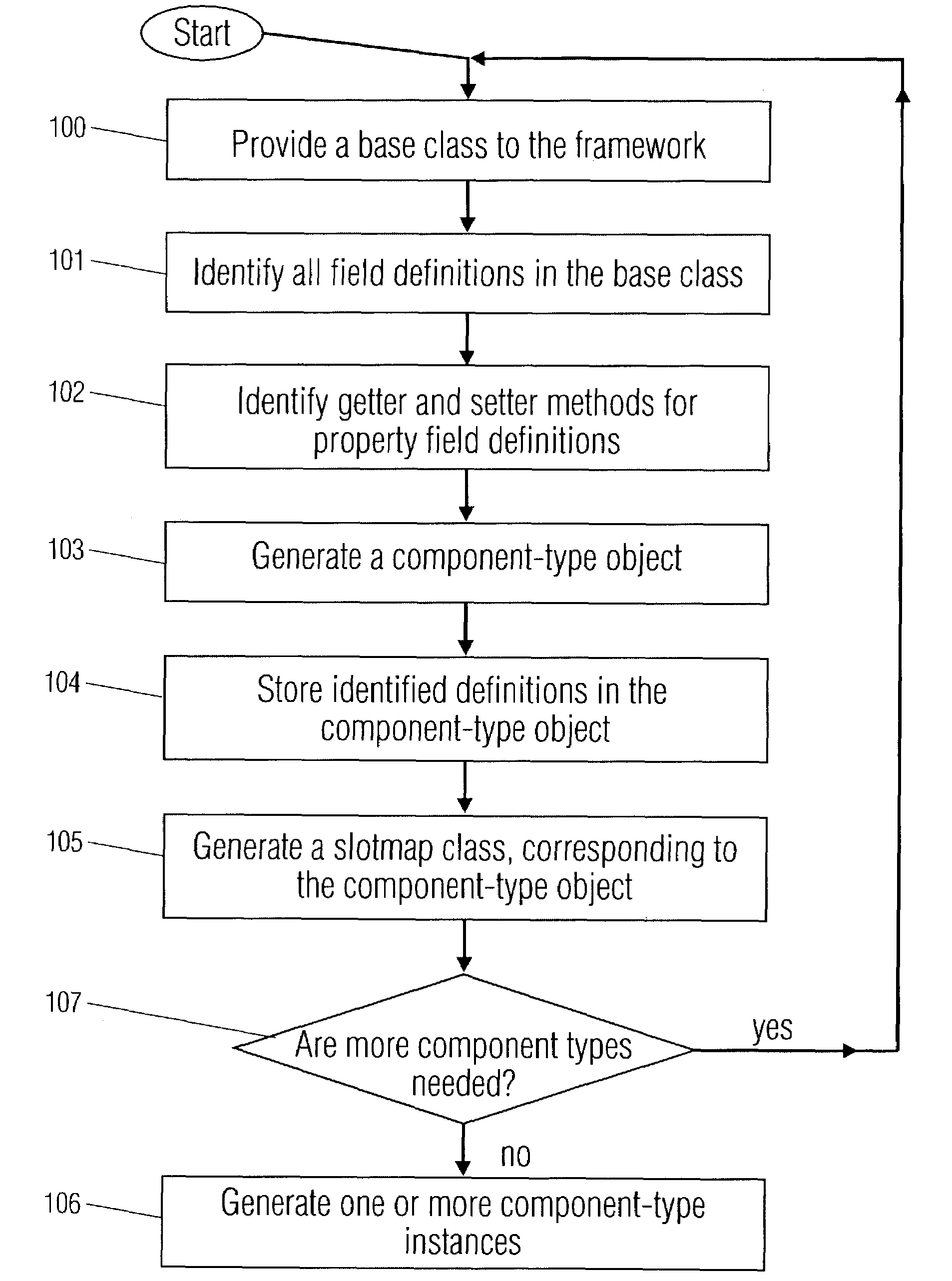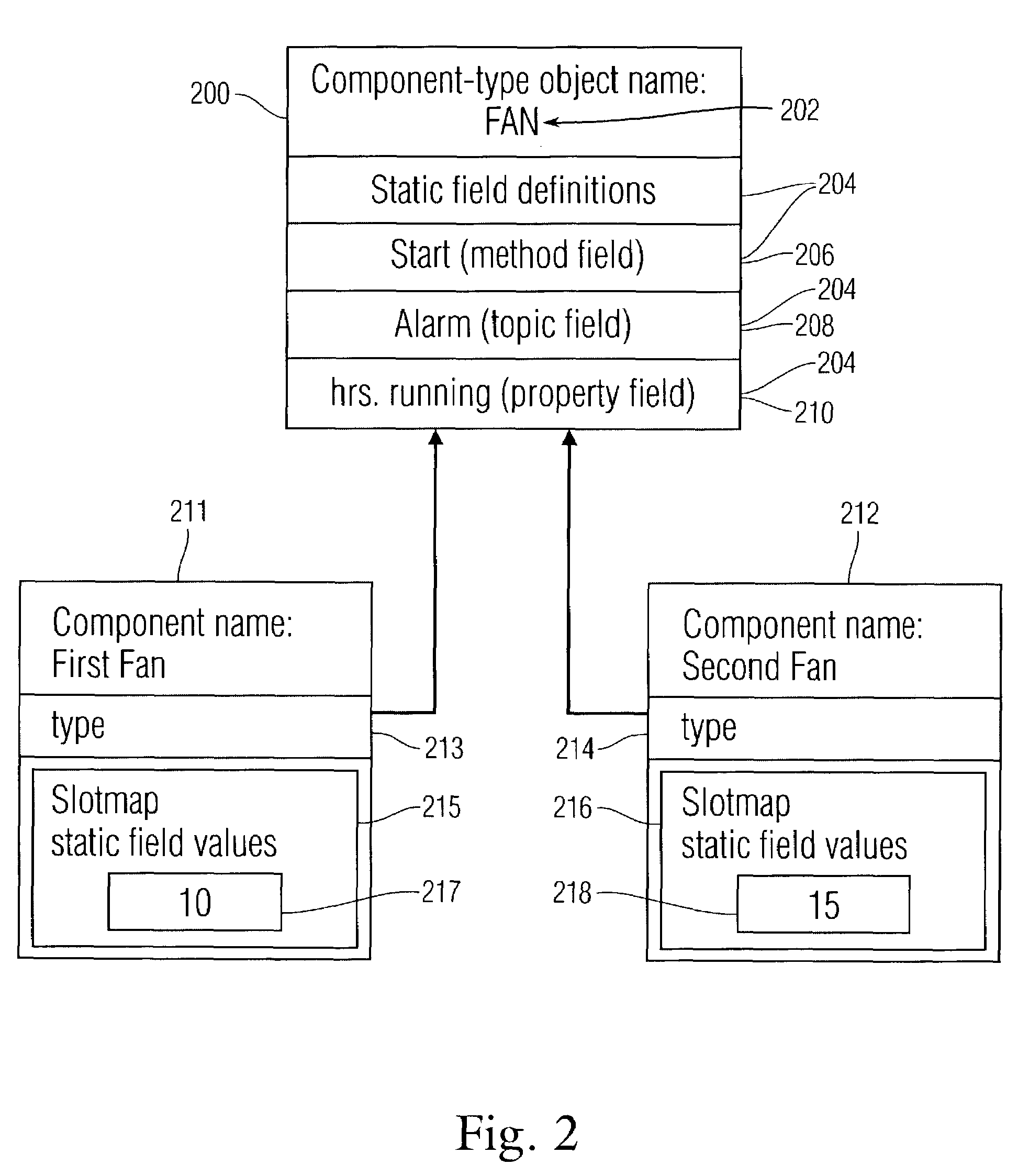Dynamic objects with property slot definition and runtime mechanisms
a technology of dynamic objects and runtime mechanisms, applied in the direction of user interface execution, web data retrieval, instruments, etc., can solve the problems of inability to expect that domain experts have the time or inclination inability to graphically visualize the entire system of existing component technologies, and inability to achieve the time or inclination of domain experts to become professional programmers
- Summary
- Abstract
- Description
- Claims
- Application Information
AI Technical Summary
Benefits of technology
Problems solved by technology
Method used
Image
Examples
Embodiment Construction
[0019]The component model of the present invention provides a unique component design for software components that allows application developers to extend and modify software components in a graphical environment suitable for non-programmers. The component model design enables new slots, such as properties, actions or topics to be added to standard components without the software coding steps that would typically be required.
[0020]A component model approach to software development allows software components to be created that have a direct relation to the end use application, while still capitalizing on the benefits of object oriented software design. As such, components provide a higher level of abstraction than is present in a pure object-oriented approach. Where objects encapsulate behaviors that are applicable to software functions (such as handling a string, providing buffer management, etc), components may assemble objects to meet the needs of end application goals (such as pr...
PUM
 Login to View More
Login to View More Abstract
Description
Claims
Application Information
 Login to View More
Login to View More - R&D
- Intellectual Property
- Life Sciences
- Materials
- Tech Scout
- Unparalleled Data Quality
- Higher Quality Content
- 60% Fewer Hallucinations
Browse by: Latest US Patents, China's latest patents, Technical Efficacy Thesaurus, Application Domain, Technology Topic, Popular Technical Reports.
© 2025 PatSnap. All rights reserved.Legal|Privacy policy|Modern Slavery Act Transparency Statement|Sitemap|About US| Contact US: help@patsnap.com



